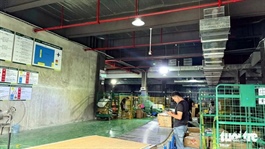Going global revolutionises hiring at tech and creative firms
Going global revolutionises hiring at tech and creative firms
Amid the robust digital transformation in Việt Nam, information technology and creative industries have emerged as sectors with significant growth potential.

Many businesses look to international and remote employees as a breakthrough solution to supplement their workforce. — Photo courtesy of EloQ |
This has driven up demand for human resources in terms of both numbers and quality, posing challenges to businesses in finding and retaining talent, according to insiders.
According to the Ministry of Information and Communications, the number of registered digital technology businesses has increased by nearly 30 per cent since 2020 to 75,000.
Despite its late development, the creative industry accounts for around 3 per cent of the country’s GDP, according to the General Statistics Office.
The Vietnam IT Market Report by TopDev pointed out that there would be a need for 700,000 IT workers by 2025.
The country has around 530,000 now.
The creative industry with its specific expertise and high turnover rate also has constant recruitment demand, and the human resources available now are insufficient to meet it.
Businesses have to compete to attract and keep talent, which causes problems as they have to constantly hunt for and train new employees, industry insiders said.
Diversify human resources
According to a report titled “A 10-year review, Vietnamese Talent Trends” by Anphabe, a consulting firm that provides employer brand and happy workforce solutions, 57 per cent of white-collar workers have been in temporary and flexible jobs.
Some 30 per cent of Gen Z expect employers to offer flexible work schedules and 71 per cent will consider other jobs if they do not.
This requires businesses to find effective human resource solutions.
To address these challenges, domestic and foreign companies said they are considering hiring foreign workers and diversifying working policies.
Recruiting remote workers and the flexibility offered by remote and on-site work also help businesses connect more easily with both local and global talent, especially Gen Z workers.
But this process can become complex, especially when dealing with a diverse workforce comprising multiple nationalities due to payment procedures, and time zones, according to analysts.
Therefore, businesses should consider adopting a professional and integrated remote employee management system to ensure both high performance and effective HR management, they said.
The remote employee management platform market is currently vibrant, with a wide variety of options from a single feature to supporting multiple tools, they said.
This is a very favourable condition for businesses to choose a platform that suits them, they said.
Job van der Voort, co-founder and CEO of Remote, a leading global remote workforce management system, said: “Hiring internationally and maintaining a remote workforce used to be a privilege reserved for large corporations.
“Today, even small and medium-sized enterprises can access global talent.”























